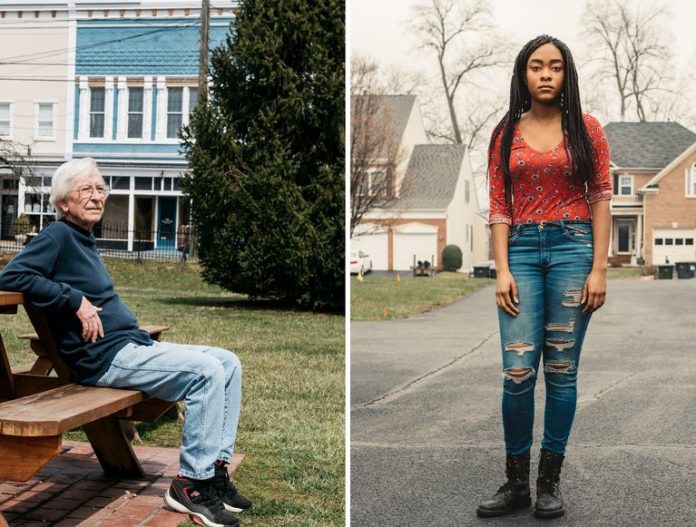
BERRYVILLE, Va. — For more than a month now, the questions have ricocheted down this Main Street culled from a Norman Rockwell dreamscape — past the dueling barbershops and the outdoor broom sale and the mural with the horse — quietly at first, when the Florida massacre was still fresh, and then not so quietly.
Why would this time be different? Why should it be?
“Every time something happens, everybody’s hollering,” Garland Ashby, 77, the owner of an estimated 75 guns, said of the recent protests over gun control, rubbing at his cigarette stub from a park bench in this town of 4,200. “A couple of months it’s in the news, and then it’s gone.”
More than a week has passed since some 800 student-led marches pulsed through the country and abroad — more than a week for momentum to build, or stall out, or morph into something beyond anyone’s control. And in this tossup congressional district, a short drive from the demonstration’s nexus in Washington, and in other House battlegrounds nationwide, a consensus has formed on at least this much: Both sides think they are being underestimated. Both insist their adversaries will tire eventually, punching themselves out.
“It’ll go away,” Mr. Ashby predicted, grinding the cigarette into the mud. “Like all the other times.”
“They’re looking for us to get bored,” said Rosie Banks, 17, a high school junior about 40 miles east in Sterling, Va., whose bedroom includes the “Am I Next?” sign she hauled across the capital last month and a fish named Malcolm X. “We’re not going to get bored.”
This has certainly not happened yet. Both before and after the march, high school students have shown themselves eager to hatch longer-term plans, with some plotting together last week through their spring breaks.
In this stretch of Northern Virginia, students are trying to organize a town hall with Representative Barbara Comstock, one of the most vulnerable Republicans in Congress, recognizing that her support from the National Rifle Association could be a drag in a district that preferred Hillary Clinton in 2016.

New voter registration pushes, steered by teenagers, are well underway. Students are consulting with established (and adult-run) groups like Everytown for Gun Safety, founded and financed by Michael R. Bloomberg, and the Brady Campaign to Prevent Gun Violence — with plans to discuss how to host their own candidate events before November or start clubs at their schools.
Even less politically active students in Virginia’s 10th Congressional District have learned Ms. Comstock’s name. “They know who she is,” said Paige Thimmesch, 16, Ms. Banks’s classmate in Sterling, Va., who is hoping to arrange the forum with the congresswoman. “They don’t know every single policy. They do know that she is pro-gun.”
Looking to history, fledgling activists are researching Vietnam-era student protests for context and inspiration. They are using words like “intersectional.” They are quoting favored lyrics from “Hamilton”: “This is not a moment, it’s the movement.”
That movement, though, will hinge on reversing years of below-average voter turnout among young Americans — translating sound and fury into the long, slow work of lasting change.
In the 2014 midterm elections, less than 20 percent of voters between the ages of 18…










